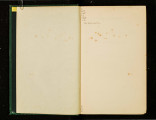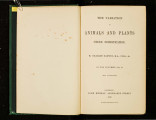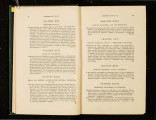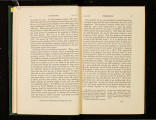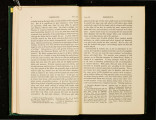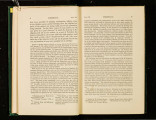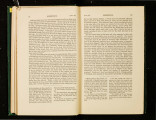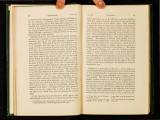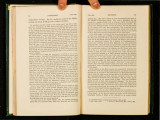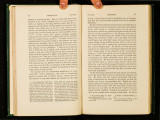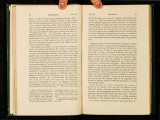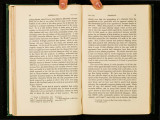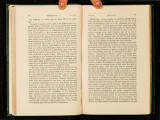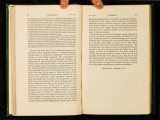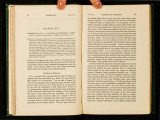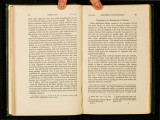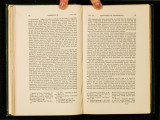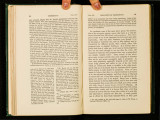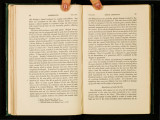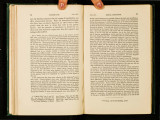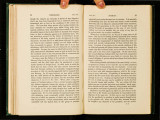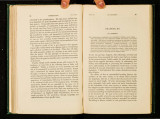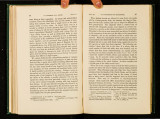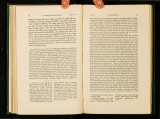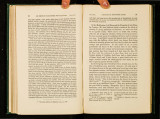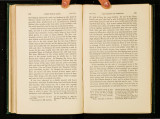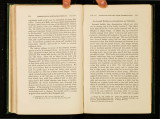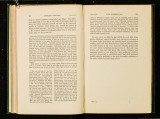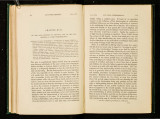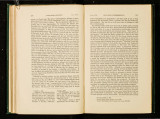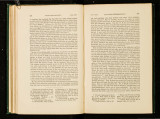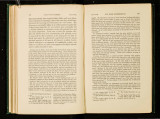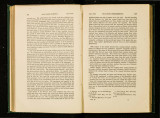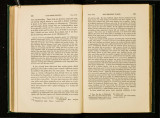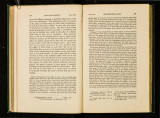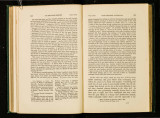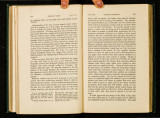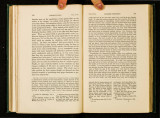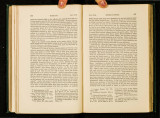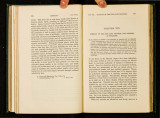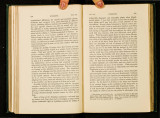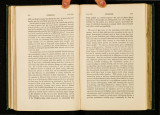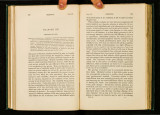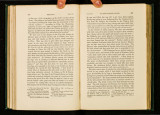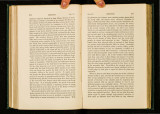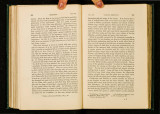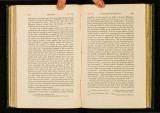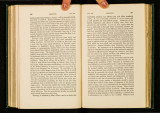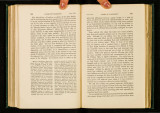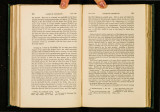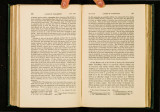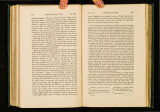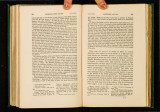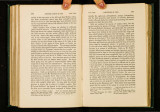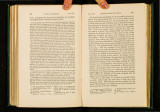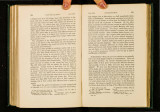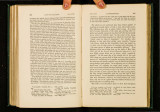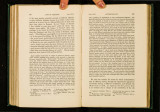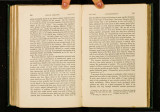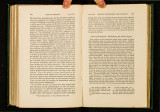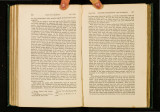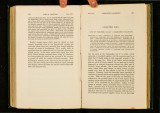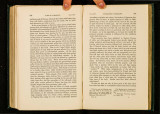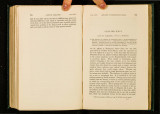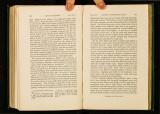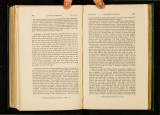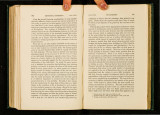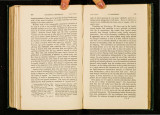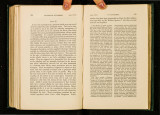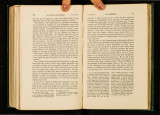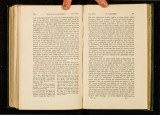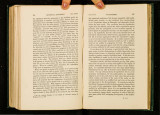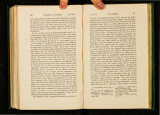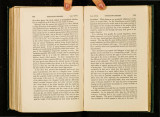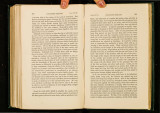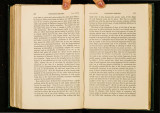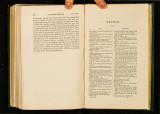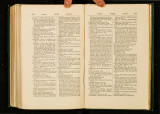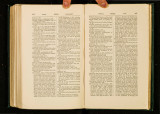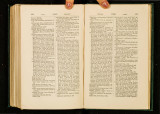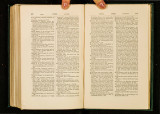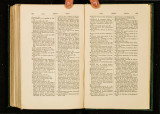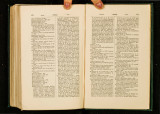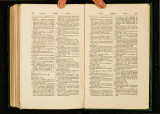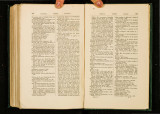| OCR Text |
Show - --- CIIAP. XXI. SELECTIO~. 2213 " until the other sorts had :first become :filled with the knots." On the other hand, peaches in North America suffer mu~h from a disease called the yellows, which seems to be peculiar to that continent, and " more than nine-tenths of the victims, "when the disease :first appeared, were the yellow-fleshed " peaches. The white-fleshed kinds are mu~h more r~r:ly " attacked; in some parts of the country never. In Mauntms, the white sugar-canes have of late years been so severely attacked by a disease, that many planters have been compelled to give up growing this variety (although fresh plants were imported from China for trial), and cultivate only re? caries. 9 Now, if these plants had been forced to struggle w1th other competing plants and enemies, there cannot be a doubt that the colour of the flesh or skin of the fruit, unimportant as these characters are considered, would have rigorously determined their existence. Liability to the attacks of parasites is also connected with colour. It appears that white chickens are certainly more subject than dark-coloured chickens to the gapes, which is caused by a parasitic worm in the trachea.10 On the other hand, experience has shown that in France the caterpillars which produce white cocoons resist the deadly fungus better than those producing yellow cocoons.11 Analogous facts have been observed with plants: a new and beautiful white onion, imported from France, though planted close to other kinds, was alone attacked by a parasitic fungus.12 White verbenas are especially liable to mildew.13 Near Malaga, during an early period of the vine-disease, the green sorts suffered most ; " and red and black grapes, even when interwoven with the sick plants, suffered not at all." In France whole groups of varieties were comparatively free, and others, such as the Chasselas, did not afford a single fortunate exception; but I do not know whether any correlation between colour and liability to disease was here observed.14 In a former chapter it was shown how curiously liable one variety of the strawberry is to mildew. ·. 12 'Gardener's Chronicle,' 1851, p. 595. 13 9 ' Proc. Royal Soc. of Arts and 'Journal of Horticulture,' 1862, p. Sciences of Mauritius,' 1852, p. cxxxv. JO • Gardener's Chronicle,' 1856, p. 379. n Quatrefages, 'Maladies Actuelles du Vera Soie,' 1859, pp.12, 214. 476. . 14 ' Gardener's Chronicle,' 1852, PP• 435, 691. CHAP. XXI. KATURAL SELECTION. 22G It is certain t~at insects regulate in many cases the range and ~ven ~he existence o~ _the higher animals, whilst living undm thm~ natural conditions. Under domestication lightcolo~ red ammals suffer most : in Thuringia 15 the inhabitants do n~t hke grey, w~ite, o: pale cattle, because they are much more t roubled by var~ous kmds of flies than the brown, red, or black catt~e: An Albmo negro, it has been remarked,16 was peculiarly se~1SitLve to the bites of insects. In the West Indies 11 it is smd that "the only horned cattle :fit for work are those which "have a good deal of black in them. The white are terribly " tormen~ed by the insects; and they are weak and sluggish in " proportiOn to the white." .t I. nb D re vonds hire there is a preiudice against white p1'gs be J ' cause I IS e reve that the sun blisters them when turned out; 1s and I knew a man who would not keep white pigs in Kent for the sa.me reason. The scorching of flowers by the sun se~ms likewise to depend mu~h on colour; thus, dark pelargoniums suffer mo~t; an~ from vanous accounts it is clear that the cloth-of-gold var.Iety will no~ ~ithst~nd a degree of exposure to sunshine which other vaneties enJoy. Another amateur asserts that not only all dark-coloured verbenas, but likewise scarlets suffer from the sun ; " the paler kinds stand better, and pale' blu . pe~haps the best of all." So again with tbe heartsease ( ;.w;; trwolor); ~ot weath~r suits the blotched sorts, whilst it destroys thet bea1u tiful markings of some other kinds ·1 9 D urm· g one ex reme y cold season in Holland all red-flowered hyacinths were observe~ to b: very inferior in quality. It is believed b~ many agrwul~unsts that red wheat is hardier in northern climates than white wheat.2o vVit~ animals, white varieties from being conspicuous are the mo.st liable to be attacked by beasts and birds of prey. In pal~ of France and Germany where hawks abound persons are advised not to keep white pige·o ns.' for , as p armen t'.w r says "I.t 15 Bechstci n, 'Naturgesch. Deutsch- Pi o- 24 ' lands," 1.,801, B. i. s. 310. ~9' ~- : . ~6 Prichard,' Phys. Hist. of Mankind' 476 4;~~mal of HortiCultur~,' 1862, pp. 18::>1, vol. i. p. 224. ' ' • 1865, P· 460. W1th respect 17 G L . ' 'J . . to the hcartsea~e. ' Gardener's Ch . · ew1s ~ oumal of Res1dence nicle' 1863 p 628 ro-m \Vest Indies,' ' Home o.uJ Col 20 ', ' •• • Library' p 100 · Des J acmthes, de leur Culture' c ' • • 1768 . ' JS Sidney's edit. of Youait on the C!Jro' m. pcl. e,'5 31 8.4 6o, np . w65h3e.a t, 'Gardtncr"s |




